Believe it or not, we’re only a couple weeks away from Christmas already. Step outside or take a look at the meager snow report and you won’t believe me, as we’re seeing an incredibly mild and slow start to the season, but nonetheless we are quickly approaching the 25th of December. Many of you will be receiving and giving gifts related to skiing and snowboarding this holiday season. With it being slow right now in terms of reporting things, I figured I’d give you all some ideas of what to ask for or purchase in terms of (what I consider) essential, and non-essential, gear for skiing and snowboarding here in the Southeast.
I’m going to exclude from talking about boards, skis, boots, and bindings, as I think most of that stuff is subjective and depends on personal preference. That and I’m a snowboarder so I don’t know anything about ski specific gear! Rather, this is more about outerwear and accessories that I think enhance your experience when you head out on the slopes. This isn’t an advertisement for any brand, it’s simply what I’ve come to use over the years and it works great for me!
Gore-Tex Anything
Here in the Southeast, the snow is generally more “wet” in consistency. We usually don’t get the champagne powder that places out west such as Utah and Colorado get. Snow to liquid ratios here generally result in heavier, wetter snow…for the most part anyways. Resorts here in the region also rely heavily on snowmaking, which also produces snow with a high liquid content.
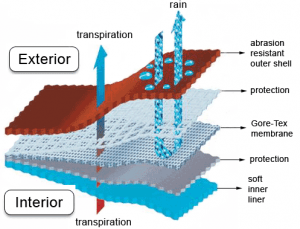
We’ve all had a day on the slopes with the snow guns blasting, raining day some of that wet, mandmade snow directly onto you. When I first started out snowboarding, there were many a days where I would leave the mountain absolutely soaked. Cold and wet…not a great feeling! Then, I discovered Gore-Tex. And I will never go back to having outerwear that doesn’t contain it. Gore-Tex is a material whose pores are larger than water vapor molecules, but smaller than water droplets. In Lehman’s terms, it lets you breathe but doesn’t let water in. It is amazing and I highly recommend it if you ski or snowboard in the Southeast!
Personally, I’m a sucker for Burton outerwear. I’ve pretty much always worn Burton pants and jackets that contain some level of Gore-Tex in them. Almost all brands that make ski and snowboard jackets and pants nowadays offer Gore-Tex products though, so shop around and I’m sure you’ll easily find something that fits your size and style. I will say that these products can be pricey, so be prepared for that.
Mittens/Gloves…Keepin’ Those Phalanges Warm
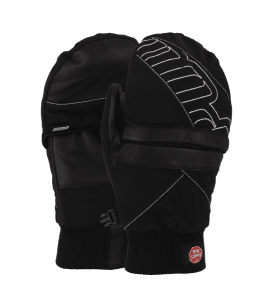 I don’t know about you, but I’m one of those people who gets cold hands pretty easily. And if they get cold and/or wet, I’m rather miserable. Having the right pair of gloves/mittens is crucial for me, and it kind of goes hand in hand (ha, get it?) with the Gore-Tex section above. Gore-Tex gloves will keep your hands nice and dry throughout a day on the slopes, even in slushy spring conditions. A lot of Gore-Tex gloves come with a pair of separate inner liners as well, which gives a little protection from the cold if you happen to take off your gloves to check your phone or get your camera out of your pocket.
I don’t know about you, but I’m one of those people who gets cold hands pretty easily. And if they get cold and/or wet, I’m rather miserable. Having the right pair of gloves/mittens is crucial for me, and it kind of goes hand in hand (ha, get it?) with the Gore-Tex section above. Gore-Tex gloves will keep your hands nice and dry throughout a day on the slopes, even in slushy spring conditions. A lot of Gore-Tex gloves come with a pair of separate inner liners as well, which gives a little protection from the cold if you happen to take off your gloves to check your phone or get your camera out of your pocket.
Personally, I prefer mittens. They don’t give as much dexterity as gloves, but I think they keep my hands and fingers warmer, especially when I throw some hand warmers in there on extra cold days. I use some mittens from a company called POW Gloves. They are by far the best pair of gloves or mittens I’ve ever owned. I forget the exact model, but the ones I use are made of Goatskin leather and have the Gore-Tex insert. They are phenomenal and super durable. Two seasons in and they look practically brand new.
Goggles…A Lens for Every Condition
Winter weather conditions in the mountains here in the Southeast can be variable to say the least. I’m paraphrasing here, but there’s a saying around Boone that if you don’t like the weather in the mountains, wait 5 minutes and it’ll change. So true! Conditions and visibility at the ski resorts changes frequently, and having the right goggles and lenses for the current conditions makes a huge difference. Simply put, it’s hard to ski when you can’t see anything!
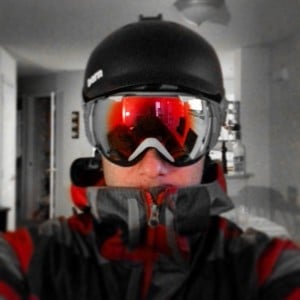
Goggle lenses come in different types of colors/tints for all types of conditions and are measured in VLT, or visible light transmission. For bluebird, sunny days you want a lens that has a low VLT, therefore allowing less light in. For night riding, you’d want a lens that has a high VLT, allowing more light in and increasing visibility in darker conditions. Check out the link below for a good overview of different lenses for varying conditions.
http://www.evo.com/smith-goggle-lens-color-tint-guide.aspx
Now, you can buy multiple pairs of goggles and have one for every condition. Or, you can buy a single pair that has interchangeable lenses. Goggles with interchangeable lenses have become really popular over the last several years. I am a big fan of the Smith I/O goggles and have been using them for several years now. I have four different lenses…a polarized one for sunny days, a clear one for night riding, one for flat light conditions, and one that is good for low-light to medium-light conditions. They work wonders. On several occasions I have actually ridden in the morning with one pair and then gone to my car about halfway through the day to switch them out for another due to changing conditions. I love them.
Smith is not the only company who makes goggles with interchangeable lenses. Oakley, Anon, and several other brands have their own version. There are even goggles nowadays that have something called photochromic lenses. The lenses actually change tint based on lighting conditions. I don’t know a lot about them, but my buddy has a pair and loves them so far.
Helmets…Protect That Noggin
I went through a phase 5 or 6 years ago where I thought I looked cooler riding without a helmet. I had always ridden with one prior to that. That phase lasted about a month before I went back to wearing one as I felt so much safer with one on my head. Let’s be honest, we all catch an edge sometimes and go tumbling. I’ve cartwheeled many a times and I consider myself to be an advanced rider. The first time I took my girlfriend snowboarding she fell and hit the back of her head on an icy slope. Next time out, you can bet she had a helmet on. It’s a personal preference as to whether or not you want to ride with one, but I highly recommend wearing one. Better safe than sorry.
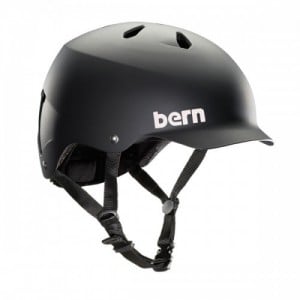 As for my suggestion for a specific brand, I’m on my second Bern helmet currently. The Watts EPS to be exact. I like the way it looks, it has vents on the top to let my head breathe, and it has EPS foam. Bern has helmets with multiple types of padding, those being EPS, Zip Mold, and Brock. Here’s a good overview of all three. (Source: https://www.absolute-snow.co.uk/buying-guides/bern-helmet-constructions-explained)
As for my suggestion for a specific brand, I’m on my second Bern helmet currently. The Watts EPS to be exact. I like the way it looks, it has vents on the top to let my head breathe, and it has EPS foam. Bern has helmets with multiple types of padding, those being EPS, Zip Mold, and Brock. Here’s a good overview of all three. (Source: https://www.absolute-snow.co.uk/buying-guides/bern-helmet-constructions-explained)
Thin Shell (EPS)
EPS is the industry standard for helmet protection. 99% of snow, skate and bike helmets are made of this. It’s a hard expanded polystyrene foam that offers great protection and is lightweight. It is however designed for single impacts. When the energy is absorbed by the EPS it causes a break. If you have a big fall you may need to replace the helmet as its shell may well be cracked and the protection compromised.
Hard Hat (Brock Foam)
Brock Foam is a Bern innovation and offers something unique to action sport helmets. Brock Foam is very breathable and malleable, meaning that Hard Hats are incredibly comfortable and lightweight. However they don’t meet winter sports and skate/bike safety standards. In our opinion however they are perfect for all but the most hardcore skiers and snowboarders as they’re designed for multiple impacts so can be worn again and again without replacing the helmet after a fall and offer almost as much protection as EPS.
Zip Mold
This is the most advanced of the construction methods which make the lightest and thinnest helmets without compromising any protection. Zip Mold helmets offer the same level of protection as Thin Shell (EPS) helmets but in a lower profile design. A thin PVC shell is liquid injected with Zip Mold foam which gives a seamless, one piece construction helmet that sits incredibly low on your head and feels like nothing’s there.
To be honest, I am unsure about the technology in other brands, but I’d imagine they are very similar.
Un-Essential Stuff…Just Because
The following are a few gift ideas that definitely aren’t essential, heck nothing on this list is technically essential, but they are cool additions to any skier or snowboarder’s gear collection.
Headphones
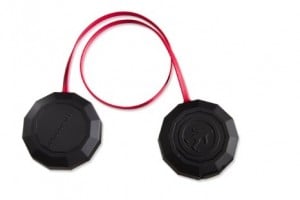 Skiing and snowboarding is undoubtedly better when you have some tunes to listen to. I can’t tell you how pumped up I get when I’m cruising through powder while listening to some Deadmau5. It’s the best. While any pair of headphones will work, I’m a tech geek and love the convenience of bluetooth. I hate wired anything. If you do look into the Bern helmets which I suggested above, take a look at the optional wireless audio chips. You can control volume, pause, and skip songs just by tapping the buttons. My friends thought I was a nerd for geeking out over it so much on the lift the first day I used them, but I think they are awesome. I believe they are compatible with any helmet with an audio liner as well.
Skiing and snowboarding is undoubtedly better when you have some tunes to listen to. I can’t tell you how pumped up I get when I’m cruising through powder while listening to some Deadmau5. It’s the best. While any pair of headphones will work, I’m a tech geek and love the convenience of bluetooth. I hate wired anything. If you do look into the Bern helmets which I suggested above, take a look at the optional wireless audio chips. You can control volume, pause, and skip songs just by tapping the buttons. My friends thought I was a nerd for geeking out over it so much on the lift the first day I used them, but I think they are awesome. I believe they are compatible with any helmet with an audio liner as well.
Brag About Your Vert

You’ve read Mike talking about the Trace app on here several times over the last couple of years. It’s a super cool app that you an use to track speed, distance, and vert over the course of your day on the slopes. The only problem I’ve encountered…it absolutely kills the battery on my phone. Using GPS consistently for 6+ hours can drain any smartphone. The company has recently released a new GPS tracker that attaches to your skis or snowboard.
Simply turn it on and let it run throughout the day. When you’re done skiing or riding for the day, sync it up to your phone and bam, you have all of your stats. Full disclosure, I don’t actually have this yet, but I’m hoping to get one for Christmas (wink wink to my girlfriend).
GoPros…THEY’RE EVERYWHERE
What would a list of ski and snowboard accessories be without mentioning GoPros? It is insane how many of them you see on the slopes nowadays. I can remember when I bought my first one. This was back in 2008 or 2009 or so. It had crummy video quality, terrible battery life, and you wouldn’t believe the looks I got from people on the mountain. This was still in GoPro’s infancy and people had no clue what the heck that antenna thing was on my head!
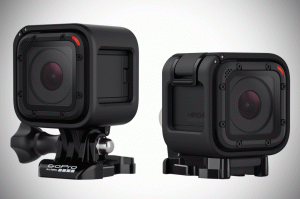 Fast forward to today and they are ridiculously popular. And for good reason. They are awesome and make it uber easy to document your day on the slopes. I’ll admit that every now and then I look back at footage from years past, reliving glorious powder days that seem like a distant memory right now. I’ll be able to watch those videos for many years to come, which sounds overly sentimental but I think is cool.
Fast forward to today and they are ridiculously popular. And for good reason. They are awesome and make it uber easy to document your day on the slopes. I’ll admit that every now and then I look back at footage from years past, reliving glorious powder days that seem like a distant memory right now. I’ll be able to watch those videos for many years to come, which sounds overly sentimental but I think is cool.
The hot thing this year in terms of the GoPro is the Hero 4 Session. It’s tiny, has great battery life, and has many features the standard model does. If you do get one, make sure to get lots of video and post a trip report on the messageboard!
As I said, this definitely isn’t an advertisement for any of these products, it’s simply meant to be a guide and give you some Christmas gift ideas for that skier and snowboarder in your life. Hopefully it helps! And if you’re simply looking to get some gear and accessories for yourself for the winter ahead, I hope it helps you out as well. Just make sure to shop local if you do go looking for some of this stuff!
And maybe, just maybe, it’ll actually get cold soon so that you can use it.

